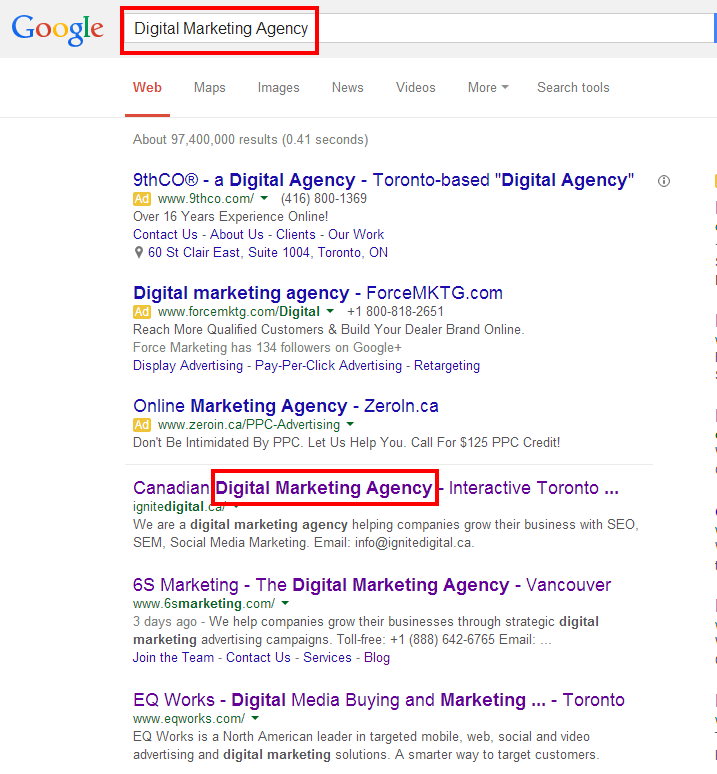Search Engine Optimization (SEO) has been around for a while now, yet a vast number of people and companies still seem astonishingly oblivious of what it takes to truly optimize a webpage or website for SEO. Even more surprising is the fact that black hat SEO techniques continue to persist obstinately, despite the harsh penalties Google is imposed for such unethical practices, particularly since the release of the Google Penguin update.
Given the circumstances, and the consequences involved, it seems unfathomable why webmasters still use keyword stuffing and poor backlinking, especially when it’s so remarkably simple to do proper on-page optimization for SEO & a White Hat SEO strategy.
Listed below, are a few strategies that can help your website climb the ranks without worrying about the dreaded Google penalties:
Permalink URLs That Are SEO-Friendly
Google places more weight on the first few words in your URL, so try to keep them short, and make them rich with keywords. Avoid long and ugly URLs at all costs, for they will chase your visitors away. Always use Hyphens, never Underscores in your permalink structure. Google looks at a Hyphen as a space. Not including hyphens could negatively hurt your on-page SEO.
Summary
• Use Hyphens as spaces
• Place relevant keywords in Permalink but never over stuff
• Use lowercase letters in your Permalink structure
• Try your best to remove any useless parameters within your permalink.
• Never Duplicate a Permalink
• Always 301 Redirect old permalinks to new permalinks
• Here is a permalink structure that we use on our blog posts. We make it extremely small more for visual appeal. We could make it more seo friendly by adding a category then the title.


Recommended Permalink Structures by Page Type
Blog Posts:
/category-name/blog-title
Service Pages:
/Services/Main-Service-Name/Sub-Services
Retail Store Product Page (1 physical store location):
/city-name/product-category/product-subcategory/brand/product-name
Ultimately, a permalink structure needs to be personalized to your website. When building an SEO friendly Permalink structure always be thinking of relevant keywords. Never stuff keywords in a permalink.
It’s All about Keyword Placement
According to a study conducted by Moz.com, your page has better chances of ranking higher if you place a keyword right at the beginning of the title. No other on-page SEO factor is as important as your title tag, so craft it carefully, and then back it up by dropping the keyword again in the initial 100 words of the text body.
Take a look at how we became the #1 SERP for “Digital Marketing Agency“. The title tag helps! 🙂


Summary
• The recommended range of characters is 50 to 60. Some say 70 and others 75. I like to play it safe rather than sorry!
• Add your most important keyword to the front of the title tag
• Place your brand name at the end. It takes up valuable “real estate” in the front
• Only place words that are valuable. Terms like “The”, “And”, “An”, “Or”, “We”… have no value in keywords. You have limited space in your title tag, use it wisely.
• Make sure your body has keywords that also support your title tag
• Never duplicate title tags – they are way too valuable for you to duplicate.
The Multimedia Manipulation
If you cannot convince your web site’s visitors with written content, try convincing them with images, infographics, and engaging videos to diminish your bounce rate and increase user time spent on your website. The video below is a great example of keeping users on your site longer. It is also a selfish plug for you to watch our awesome Canadian Marketers Stats for 2014.
Manipulating is a bit strong and more of a “hook” to make you read it. The point I am trying to get across is you need to have strong visualisation. It doesn’t necessarily help your on-page SEO.
How Quick It Goes
Ideally, your web pages should take less than 4 seconds when loading or you risk driving visitors away.
Google has gone on record to state that the loading speed of web pages is considered to be a vital ranking signal in SEO. This came into full force in 2010.
Not sure how quickly your website is loading? Here are some great tools to use to find out how quick your website is:
- Google Page Speed
- GTmetrix
- Google Webmasters Tool – After logging in, it is located under Labs > Site Performance
Content is Strong Where It is Long
Longer content, at an estimated 1500 words/post for competitive keywords, tends to rank considerably higher on Google’s search results pages, according to an industry study conducted by SERPIQ.com. Write more but make certain you retain the reader’s interest as you go.
Most blogs (including this blog) have articles anywhere from 400 to 600 words. It is a good size because we are also writing for users, not just Google. If you can’t write the full 1,500 don’t beat yourself up.
There are a number of other methods you can use for proper on-page optimization for SEO and still remain in Google’s good books, such as slashing your bounce rate, sprinkling your content with alt tags, posting only quality content, and using internal links within your content.




